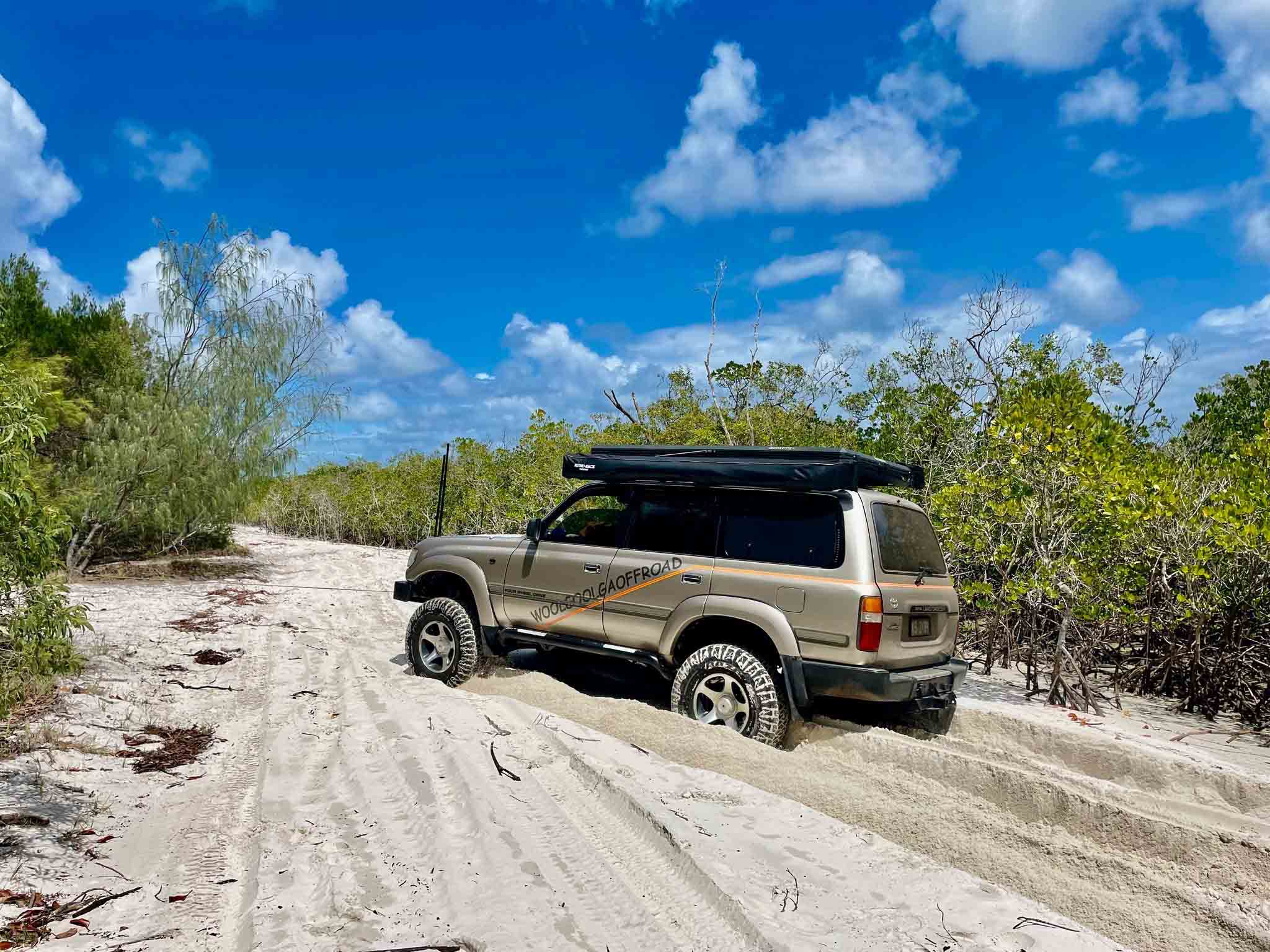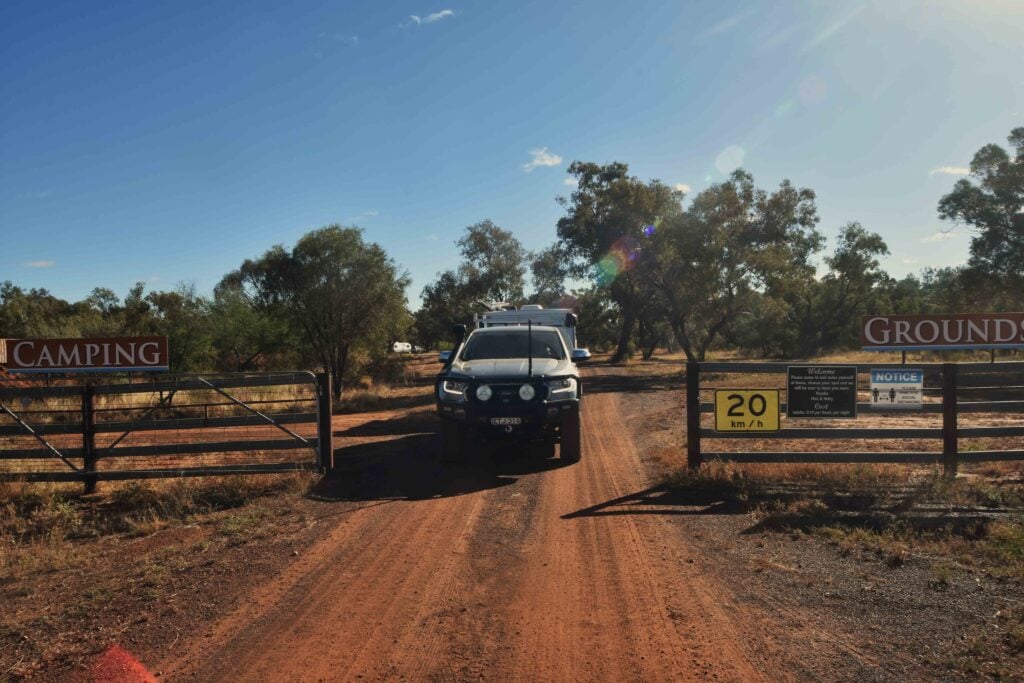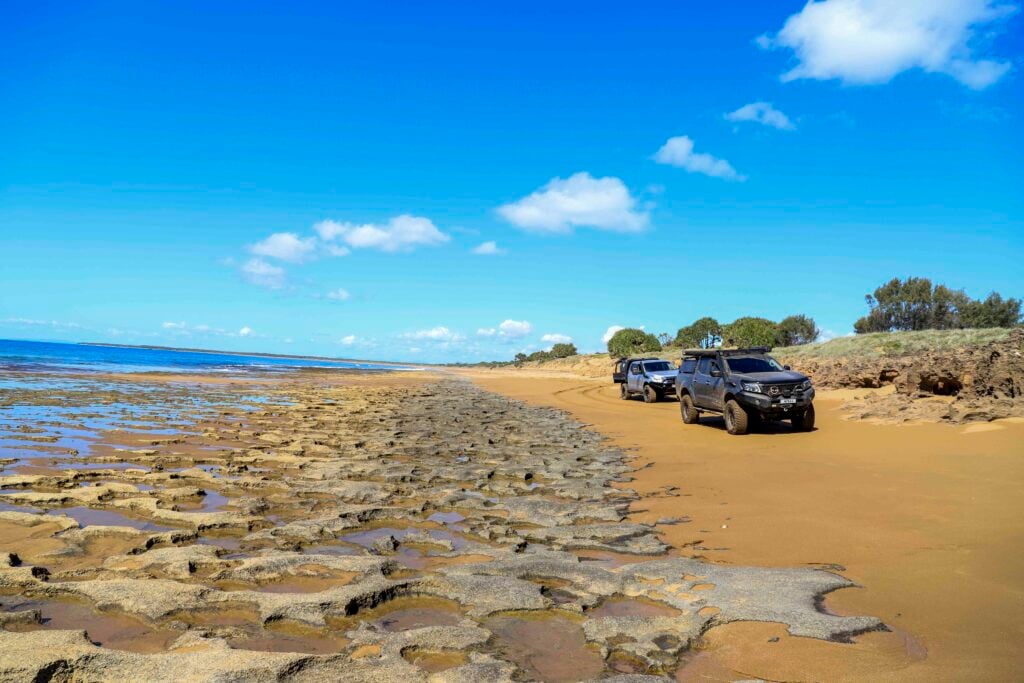I can’t believe it’s taken me more than 30 years to finally set foot on K’gari and experience its natural beauty, rich history and spectacular scenery.
To be honest, I’d been avoiding the island, imagining huge crowds and endless sand recoveries – but I couldn’t have been more wrong. Sure, tackling a new destination with a global reputation can be daunting, and my early research had me convinced the only way across was via Inskip Point, where the barge drops you on the island’s southern tip. Like most of us, I’d heard the stories of crowds gathering to watch 4x4s bog down before reaching the barge – not exactly how I wanted to make my debut.
That’s when I discovered another option – the River Heads barge, which runs across the Great Sandy Strait and lands directly at Kingfisher Bay Resort on K’gari’s western side. The 40-minute crossing is an enjoyable cruise through crystal-clear waters teeming with marine life, from turtles and dugongs to dolphins and schools of fish. Normally I’d choose camping over resort living, but I booked a few nights at Kingfisher to explore the western side of the island before heading east for my planned camping dates.
Western exploration
After checking in, I pointed the rig south to Ungowa, a spot best known for the shipwrecks wedged into its mangroves.
Ungowa offers bush camping as well as a handy day-use area near the old boat sheds. In fact, 23 shipwrecks have been recorded around K’gari, and from the cliffs here you can spot two logging barges – the Ceratodus and the SS Palmer, abandoned in 1942. The old jetty at Ungowa is barely standing these days, but once it was the hub for loading timber onto barges bound for the mainland. On their return run, those same barges carried gravel back to the island.
Next on my list was a historical gem I’d heard about from friends – Postons’ Logging Camp. The walking track to the old site isn’t marked, but with a bit of online research you can track it down. Back when timber was in hot demand, K’gari was dotted with logging camps. Operations kicked off in 1863, long before the island was protected, with massive Kauri, Hoop and Cypress pines taken, along with Blackbutt, Tallowwood and Satinay (a type of turpentine) trees. Thankfully, logging finally ceased in 1991, just before K’gari was listed as a UNESCO World Heritage site.
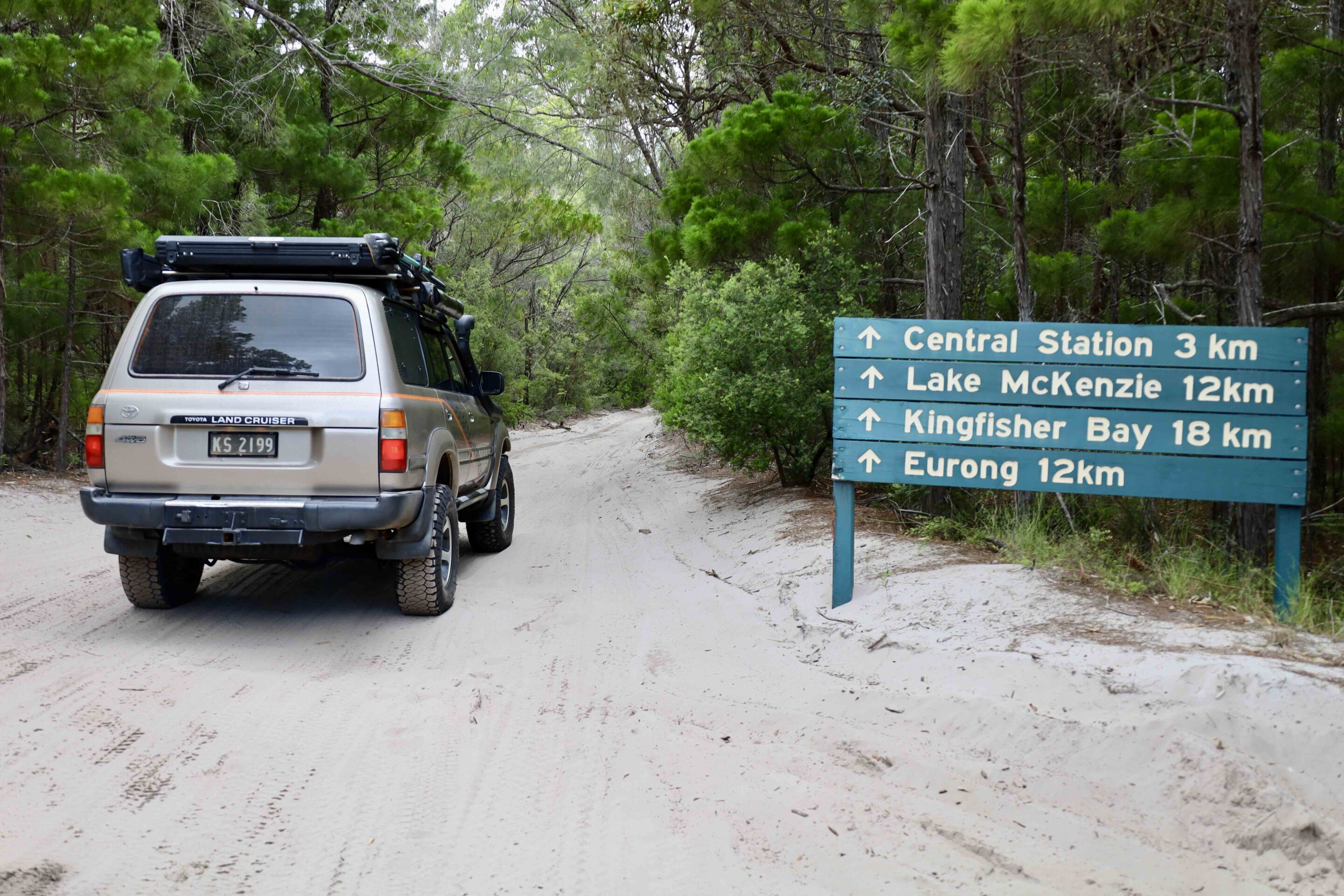
Today, Postons’ camp feels like a step back in time. Dozens of old machines, log trucks, dozers and even an abandoned bus are slowly rusting into the landscape. The remains of workshops lie with their roofs collapsed, concrete slabs and service pits scattered about, while a few cottages still stand just as they were left when the workers walked away. Wandering through the relics, I couldn’t help but wonder – should this gear have been moved and preserved, or is it better left here to slowly return to nature?
The camp itself was built high on a hill, well away from the mozzies and midges that plagued the lower ground, and to catch the cooling summer breeze.
Central Station and East Coast
After a few days exploring the western side of the island – and sampling a bit of resort life – it was time to head inland towards Central Station.
Driving the sandy tracks beneath towering trees that were spared when logging ceased is a mind-blowing experience. Today the forests are dense and thriving, with lush undergrowth and giants that somehow draw enough nutrients from the sand to not only survive, but flourish.
Central Station is a fascinating spot that was once the island’s main hub. From the 1920s through to the 1950s it was home to nearly 30 houses, a school and machinery sheds. When logging finally ceased in 1991, the site was reborn as a visitor hub, with boardwalks along the creek, informative signage and a few relics still hiding among the trees.
With a campsite booked on the east coast, I pushed on after exploring Central Station. Crossing the island via its sandy tracks is no race – the surfaces can be rough after heavy traffic, especially on the main routes. One thing I quickly noticed is that the big 4×4 tourist buses aren’t keen on sharing the track, so it’s often best to pull over and let them lumber past.
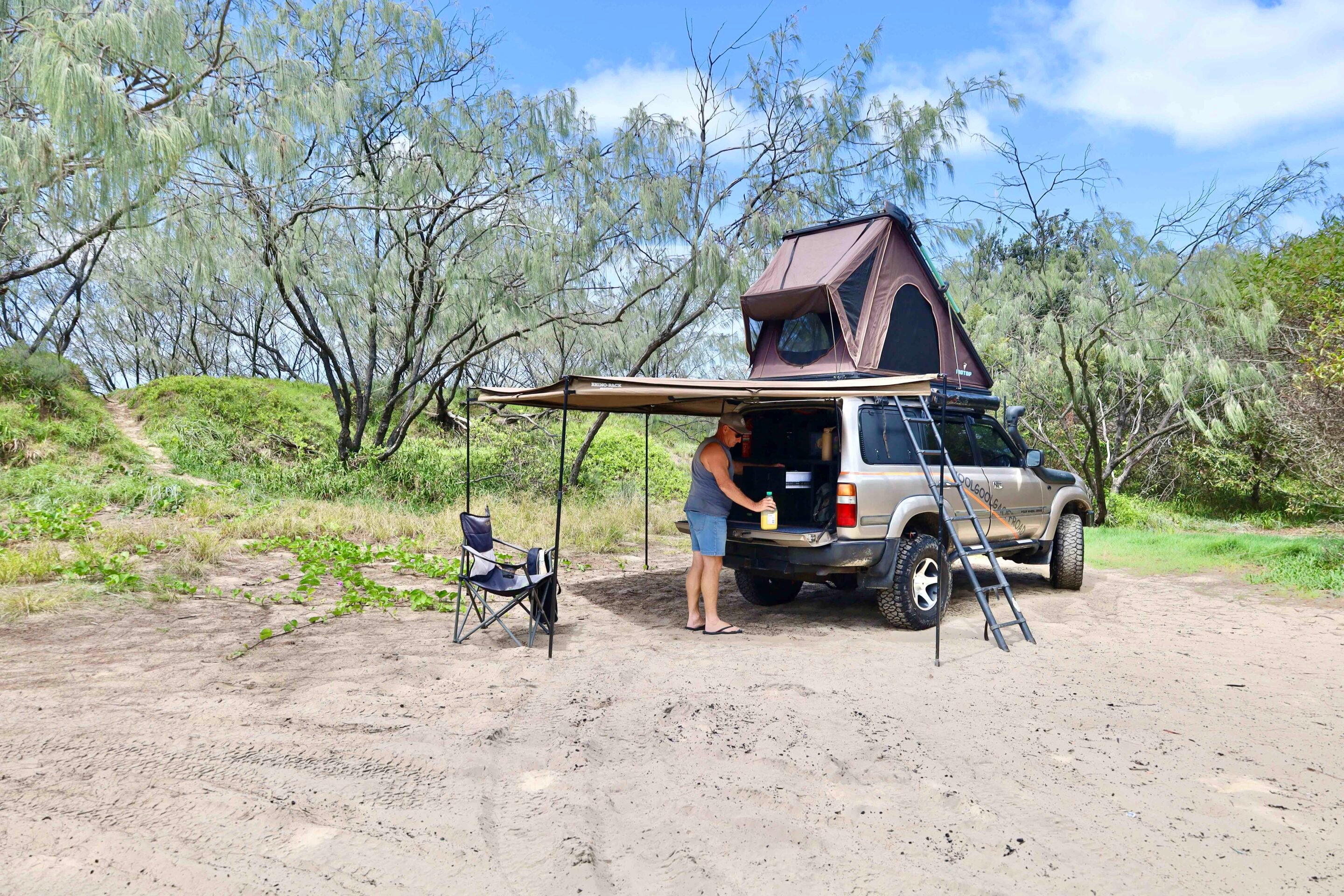
Lakes and camping highlights
K’gari is dotted with more than 40 freshwater lakes, some more famous than others.
I made a beeline for the stunning and ever-popular Lake McKenzie, with its warm waters and blindingly white sand – easily one of the island’s top five must-see spots. For something quieter, Lake Allom is worth a visit with its thriving turtle population, Lake Birrabeen rivals McKenzie for its crystal-white sand, and Basin Lake offers a unique setting perched high on a sand dune.
Camping options are spread right across K’gari, including Central Station, but most visitors gravitate to the east coast. I set up in Camping Zone 1, tucked behind a dune to take the sting out of the easterly winds. The only let-down is that fires aren’t permitted anywhere on the island, but the location more than made up for it – just a short stroll over the dune each morning to watch the sunrise and the steady stream of 4×4 traffic racing north and south to meet the barges.

After a peaceful night listening to the ocean, I headed north along the east coast to explore the island’s busiest side. Things get pretty hectic here, with road rules enforced much like the mainland. Highlights along the strip include the rusting hulk of the Maheno wreck, a dip in the Champagne Pools, a lazy float down Eli Creek and a bite to eat at Orchid Beach. For the keen, you can push all the way to the tip and camp at Sandy Cape. Dingoes are a common sight on this side, especially around tourist hot spots – when I visited, they showed little fear of people while scrounging for food.
I’ve only scratched the surface of what K’gari has to offer. Beyond the driving and scenery, there’s the island’s fascinating natural history, its European discovery and, most importantly, the enduring presence of the Butchulla people, who have called this place home for thousands of years. One thing’s for sure – I’ll be back.
Essential questions
Where is K’gari?
About 360km north of Brisbane, K’gari is the world’s largest sand island and a UNESCO World Heritage site. Home to the Butchulla people for thousands of years, its name means ‘paradise’ – a reflection of the island’s culture, natural beauty and deep history. Formerly known as Fraser Island, K’gari is accessible by 4×4 via two barge services: one from Inskip Point in the south, and the other from River Heads near Hervey Bay.
What to do on the island?
A better question might be: what can’t you do on K’gari? The island is famous for its swimming holes – both salt and freshwater – along with challenging inland 4×4 tracks and epic beach driving. Add to that a wealth of Indigenous culture, plenty of European history and some of the best beach and offshore fishing you’ll ever find.
Accommodation options range from the two island resorts to multiple campgrounds scattered across the coast and interior. No 4×4? No worries – hire one locally or join an organised tour to tick off the highlights.
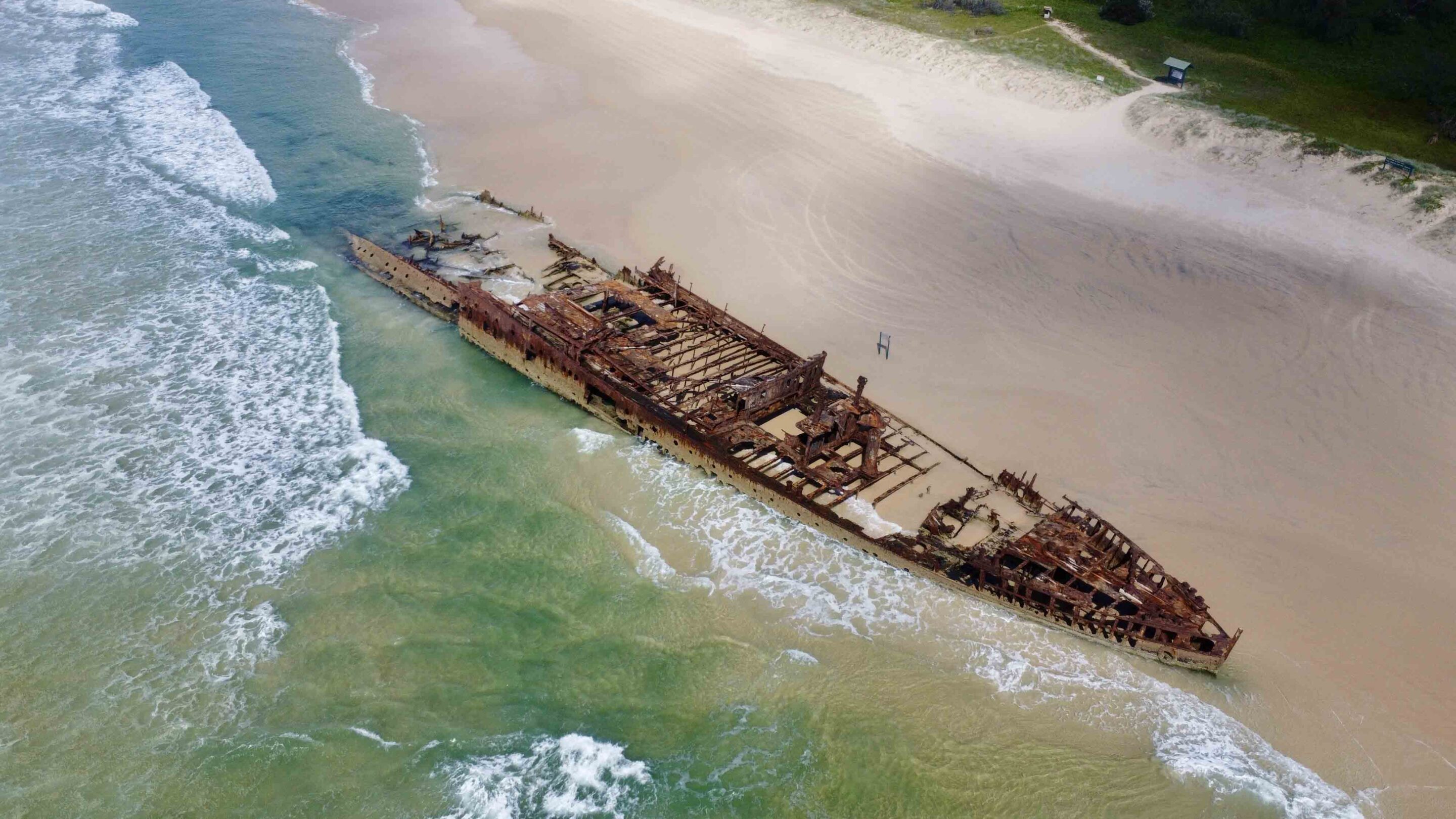
Any permits?
With the amount of traffic K’gari sees each year, there are rules and regulations in place to keep both visitors and residents safe. A Queensland Parks and Wildlife permit is required to take your 4×4 onto the island, and all road signs must be obeyed.
How to reach the island?
The Inskip Point barge crossing – tide dependent – is where the true adventure begins, delivering you straight onto the beach for that iconic run north. From River Heads, the barge lands at Kingfisher Bay Resort, where you’ll find accommodation, food outlets, fuel and resort facilities.
We recommend
-
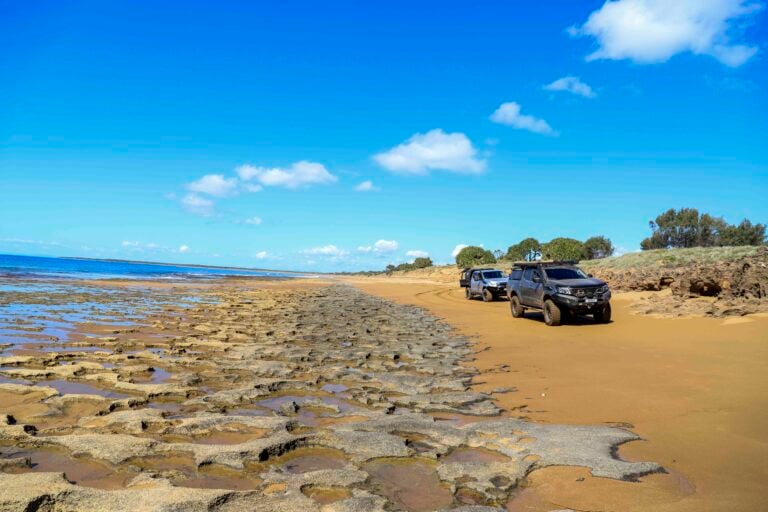 Explore QLD
Explore QLDDiscover Facing Island: Queensland’s coastal escape for campers, 4x4 enthusiasts and fishing lovers
Experience the perfect blend of camping, 4x4 trails, and fishing adventures
-
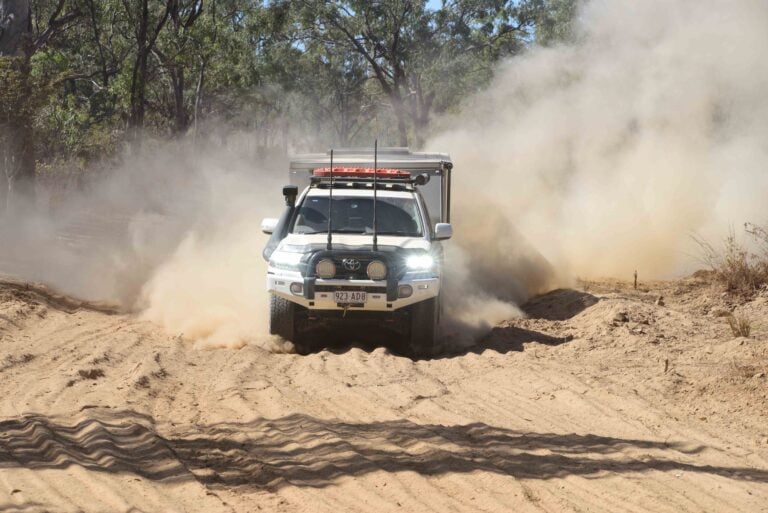 Explore QLD
Explore QLDFollow Leichhardt’s Trail: 4WD adventure through Queensland and NT's remote Gulf Country
Retrace explorer Ludwig Leichhardt’s epic 1844 journey!

